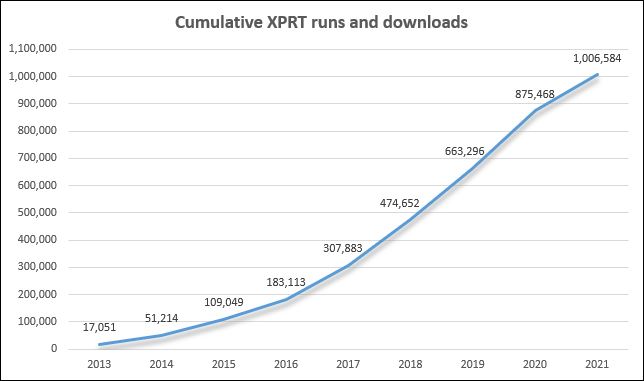Each month, we send a newsletter to members of the BenchmarkXPRT Development Community. In the newsletter, we recap the latest updates from the XPRT world and provide a summary of the previous month’s XPRT-related activity, including uses or mentions of the XPRTs in the tech press. More people read the weekly XPRT blog than receive the monthly newsletter, so we realized that some blog readers may be unaware of the wide variety of tech outlets that regularly use or mention the XPRTs.
So for today’s blog, we want to give readers a sampling of the XPRT press usage we see on a weekly basis. Recent mentions include:
- Tom’s Guide used HDXPRT 4 to compare the performance of the Geekom Mini IT8 and Dell OptiPlex 7090 Ultra small-form-factor PCs.
- Intel used WebXPRT 4 test data in promotional material for their line of 12th Gen) Intel Core processors(Alder Lake). Hundreds of press outlets then republished the presentation.
- AnandTech used WebXPRT 4 to evaluate the Cincoze DS-1300 Industrial PC.
- ZDNet used CrXPRT 2 in a review titled The best Chromebooks for students: Student-proof laptops.
- PCWorld used CrXPRT 2 to provide data for an article listing their top Chromebook recommendations.
- TechPowerUp used WebXPRT 3 to compare the browser performance of Intel Core i9-12900KS processor-based systems and other Intel- and AMD processor-based systems.
- Other outlets that have published articles, ads, or reviews mentioning the experts in the last few months include: Android Authority, ASUS, BenchLife, Gadgets 360, Good Gear Guide, Hardware.info, Hot Hardware, ITHardware (Poland), ITMedia (Japan), Itndaily (Russia), Mobile01.com (China), Notebookcheck, PCMag, ProClockers, Sohu.com (China), Tom’s Hardware, and Tweakers.
If you don’t currently receive the monthly BenchmarkXPRT newsletter, but would like to join the mailing list, please let us know! We will not publish or sell any of the contact information you provide, and will only send the monthly newsletter and occasional benchmark-related announcements such as patch notifications or new benchmark releases.
Justin













